1
The Guard House was any employee's first point of contact with the top secret facility. Military Police were stationed at a Guard House located just outside of the main gate of a security fence which surrounds the perimeter of the facility. The gate protected the bunker, but was also installed in an effort to keep unauthorized individuals away from the bunker in the event of a nuclear attack and subsequent lockdown situation.2
Guard House2012-2013
Diefenbunker: Canada's Cold War Museum, Carp, Ontario, Canada
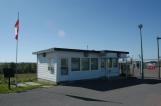 Credits:
Credits:Brian Robertson
3
Gaining access to the Diefenbunker was a multi-step process. You first had to get past the Military Police stationed in guardhouse who would sign you in, give you your badge, and let you in through the large gate. The badges that were given were different colours, and allowed employees access to different sections of the bunker depending on their security clearance and their position. Once inside the gate, you would make your way down the long and intimidating blast tunnel towards the main personnel doors. At the personnel doors you would ring the doorbell to alert Military Police sitting at the inside counter and give them a security code over the intercom. If they allowed you access through the first door, it would then close behind you. Once inside the chamber between the two airlock doors, you would have to show your badge to the camera and the Military Police would open the second door to allow you inside the facility to start your work day. Employees had to undergo this strict process each time they wanted to gain access into the facility.4
Blast Doors (Main Entrance)15 March 2013
Diefenbunker: Canada's Cold War Museum, Carp, Ontario, Canada
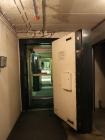 Credits:
Credits:Brian Robertson
5
Military Police were also stationed in this area at the front entrance to the Diefenbunker and were responsible for screening all individuals entering and leaving the facility. The front entrance counter is called the 'Black Platform'. Military Police were able to operate switches, including the bunker's environmental censors, from this location. They were also responsible for controlling the main doors, and for ensuring that nobody was anywhere that they shouldn't have been.6
Janet Puddicombe (Airlock Doors)28 June 2011
Message Control Centre, Diefenbunker Museum
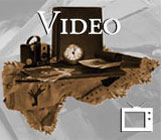 Credits:
Credits:Lara Lavelle (Interviewer)
7
Don Roper (Guardhouse)7 July 2011
Board Room, Diefenbunker Museum
 Credits:
Credits:Lara Lavelle (Interviewer)
8
View of the Guard Stationcirca late 1980s
CFS Carp, Carp, Ontario, Canada
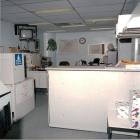 Credits:
Credits:Diefenbunker Archives
9
Surveillance cameras were installed so that Military Police would be able to keep an eye on all individuals entering the bunker and walking down the tunnel. The cameras were positioned for optimum viewing of the Blast Tunnel, and were also positioned so that Military Police would be able to see people as they flashed their badges while in the chamber between the two airlocked blast doors. The surveillance cameras shown in this picture still provide two different views of the blast tunnel and of the main entrance doors.10
Black Platform (Surveillance)15 March 2013
Diefenbunker: Canada's Cold War Museum, Carp, Ontario, Canada
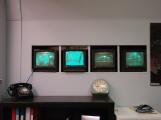 Credits:
Credits:Diefenbunker Archives
11
Janet Puddicombe (Tight Security)28 June 2011
Message Control Centre, Diefenbunker Museum
 Credits:
Credits:Lara Lavelle (Interviewer)
12
Signs like these are prominently displayed throughout CFS Carp. Many areas were off limits to certain employees. Different coloured badges allowed employees access to different areas of the bunker. Anybody found in an area of the bunker that they did not have the proper security clearance to access would have been questioned or arrested by Military Police. In many cases, employees were also required to enter security codes which would allow them access through certain doors. These security boxes were specifically installed to cover the employee's hand as they entered the code so that no watchful eyes would be able to see. Employees designated to work in communications had the highest security clearance. The highest security clearance allowed them access into OSAX - the most top secret room in the facility.13
Restricted Accessvisit circa 2002
Regional Emergency Government Headquarters (possibly Shiloh, MB)
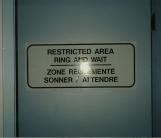 Credits:
Credits:Diefenbunker Archives